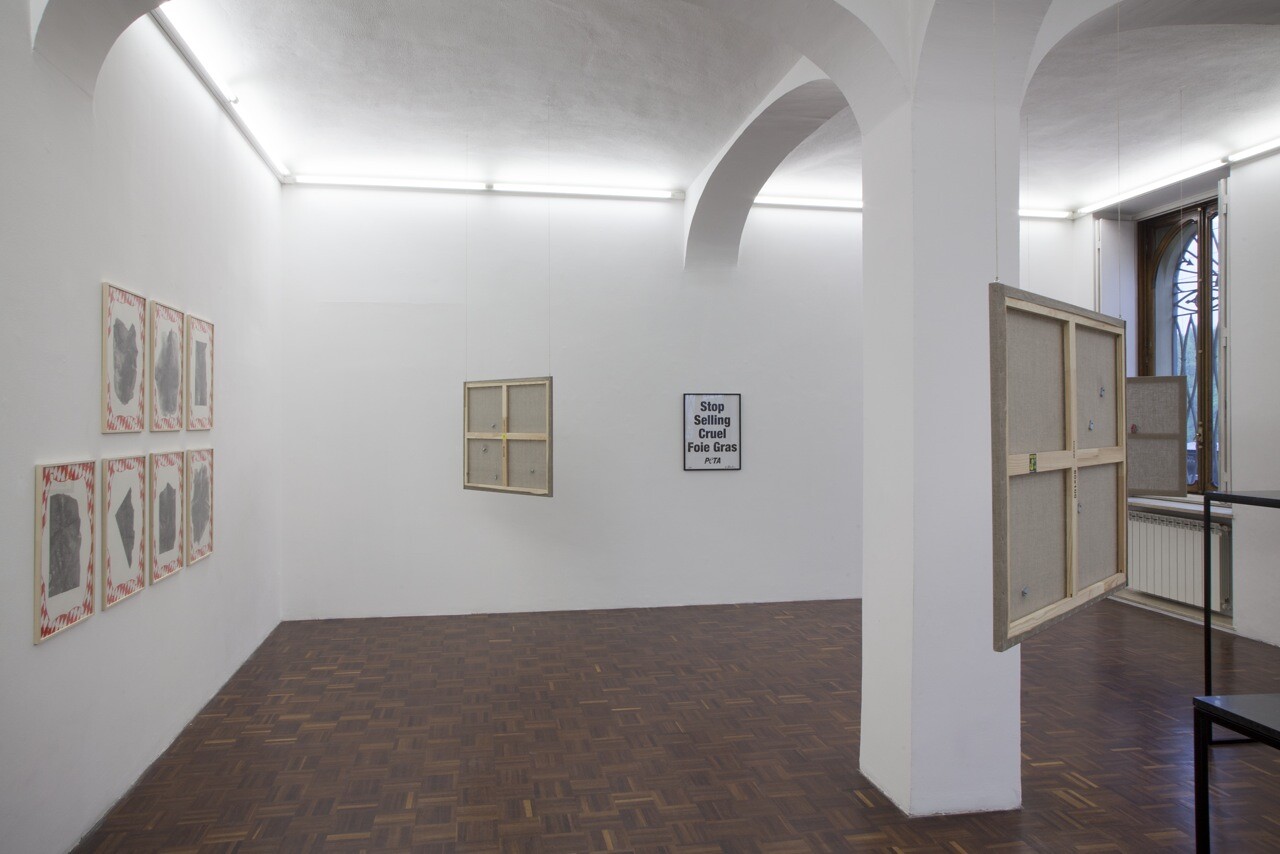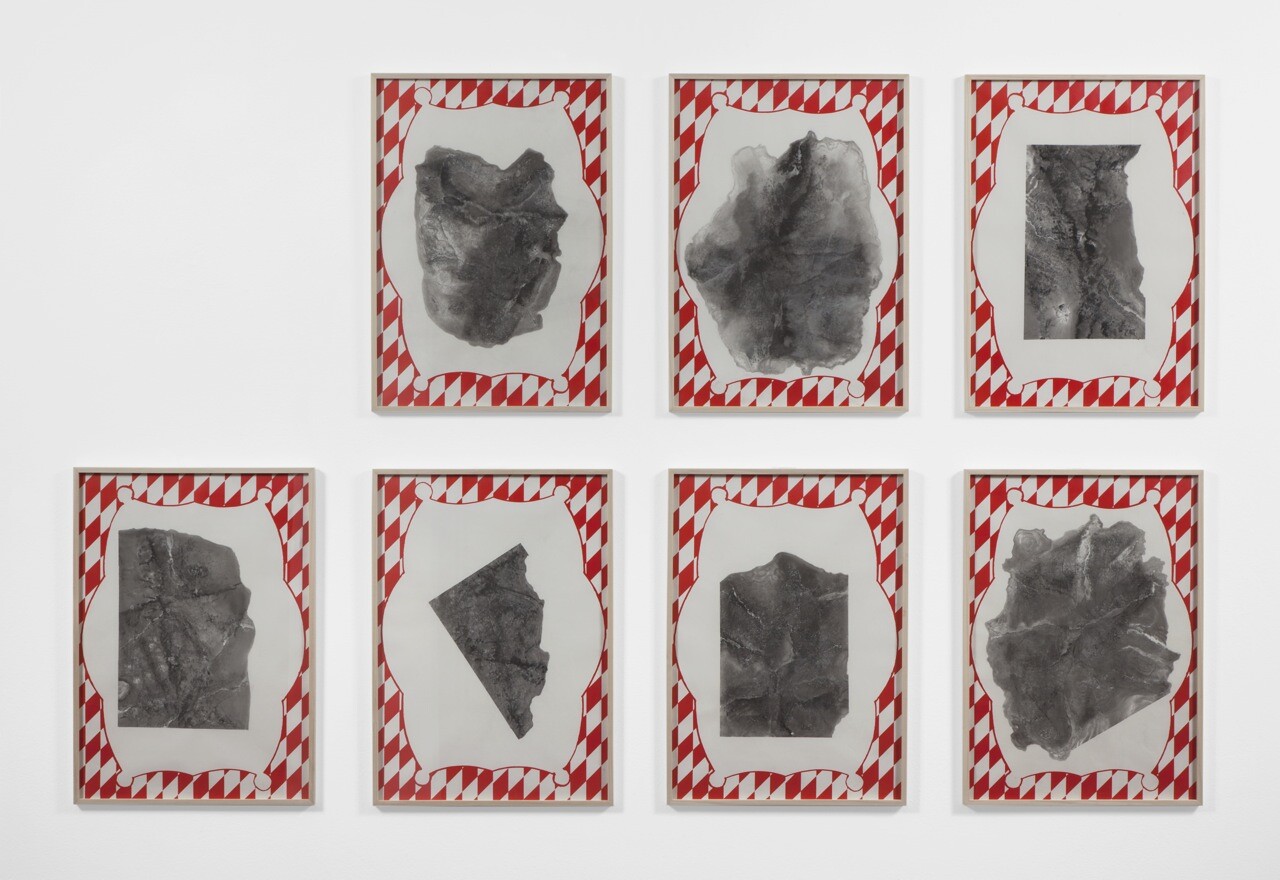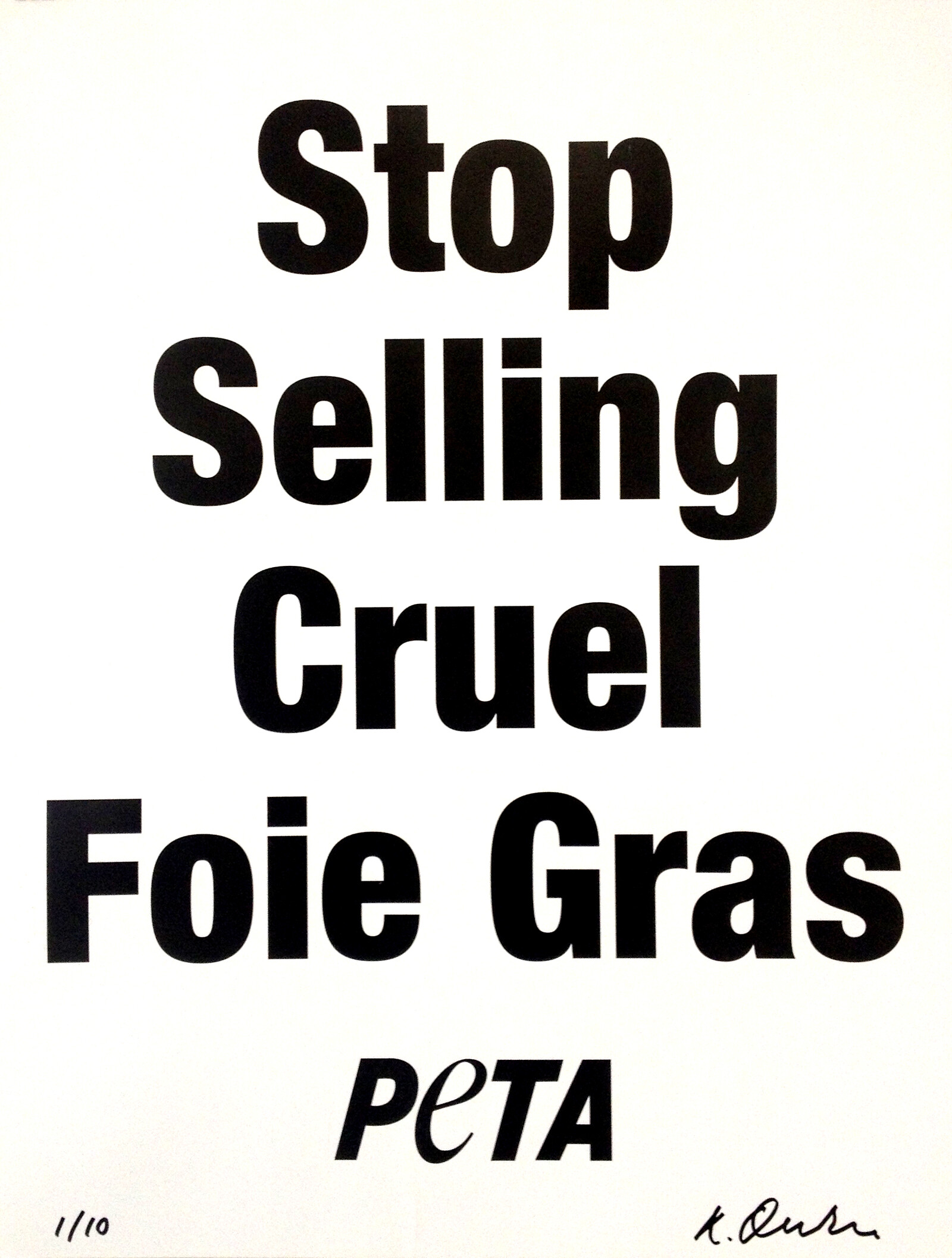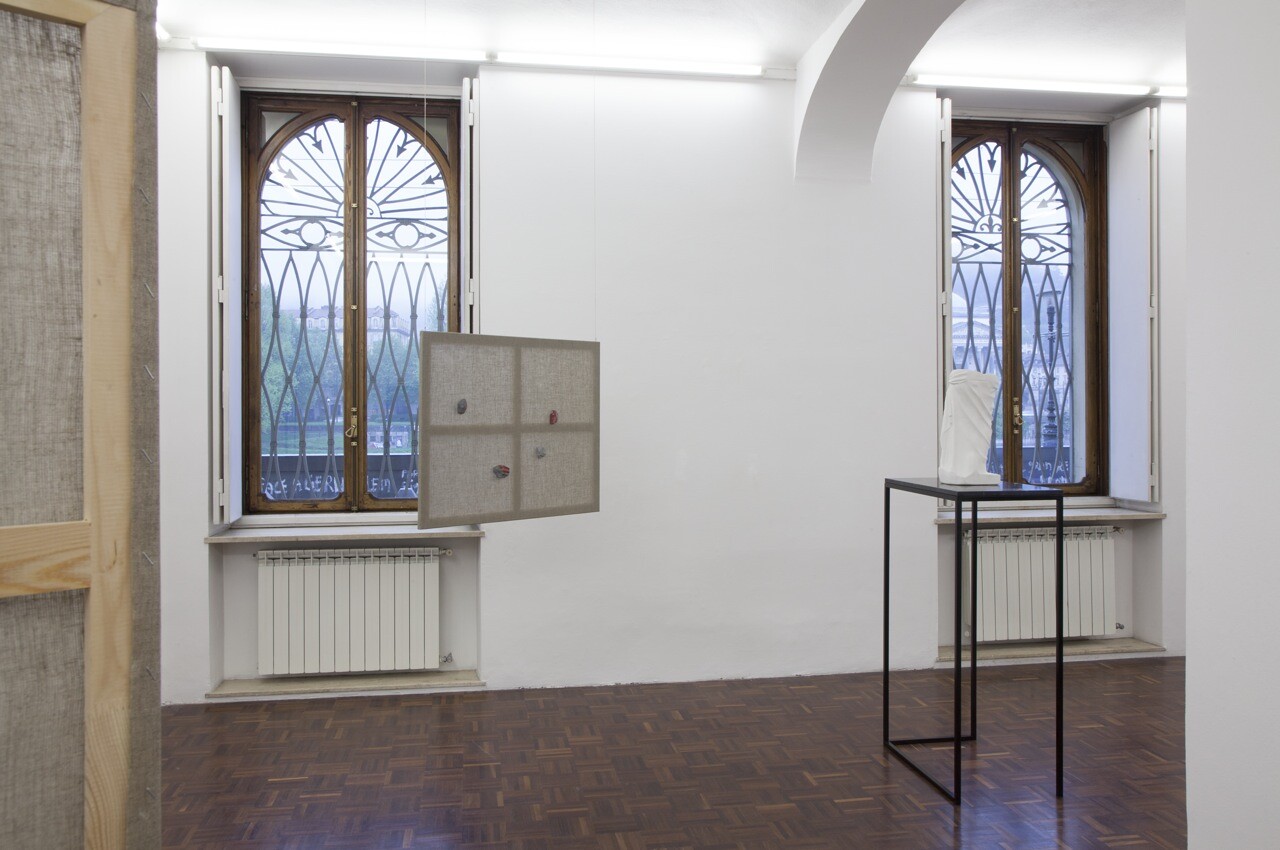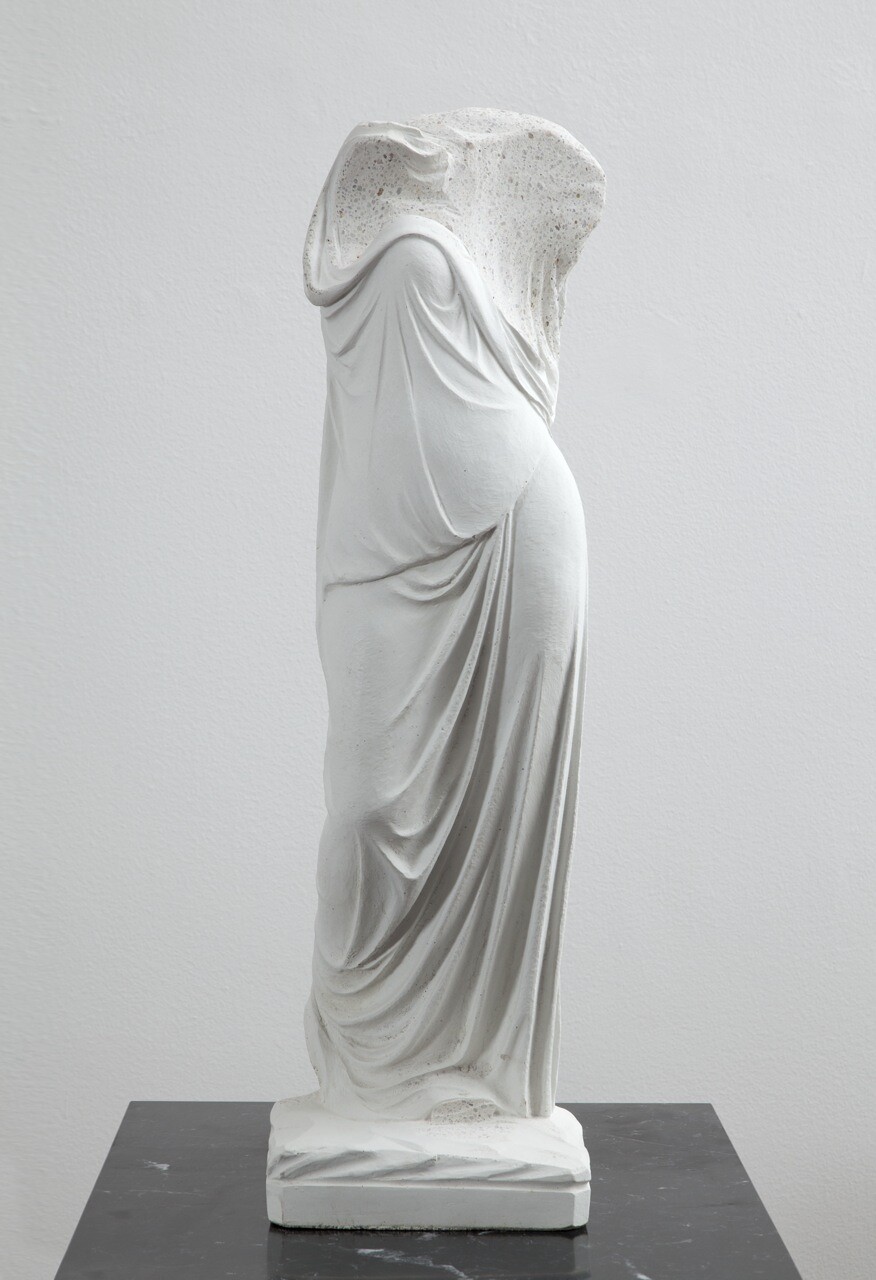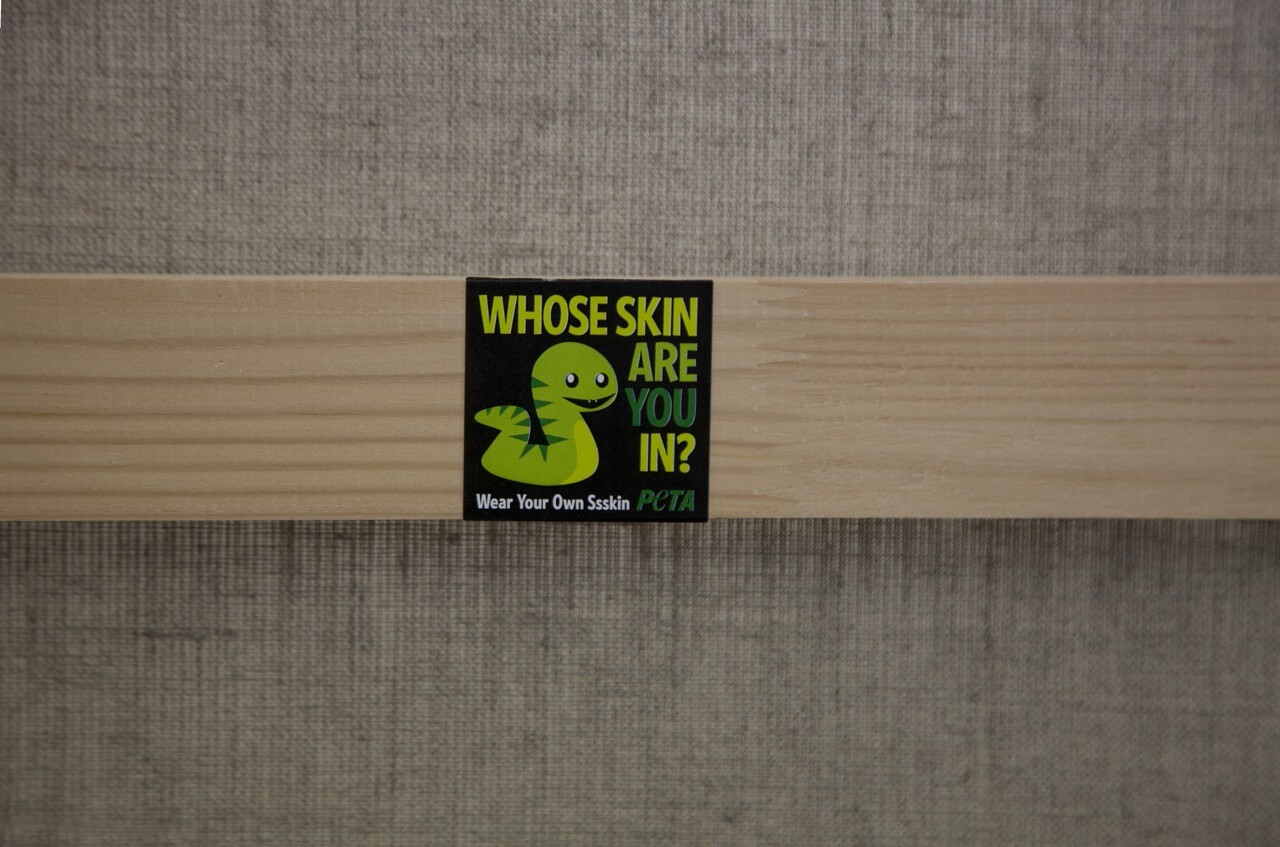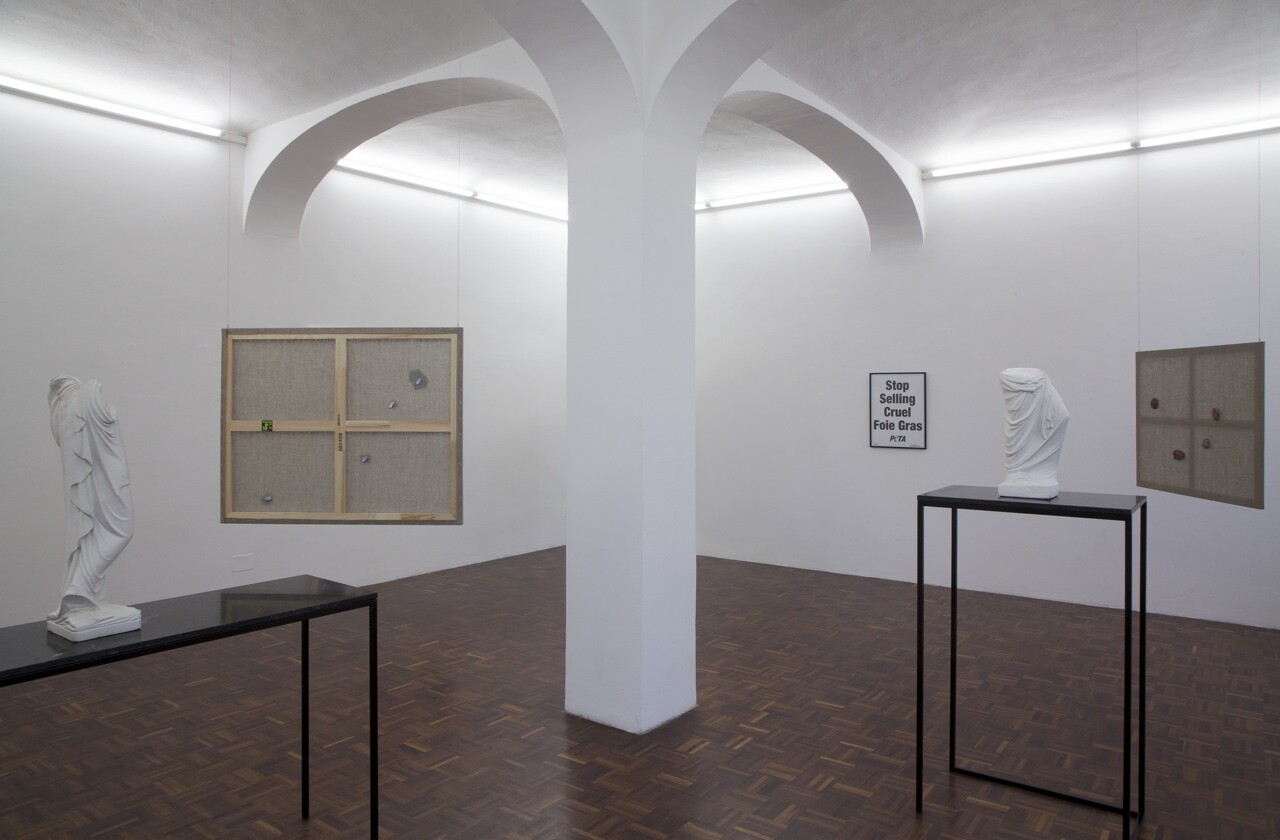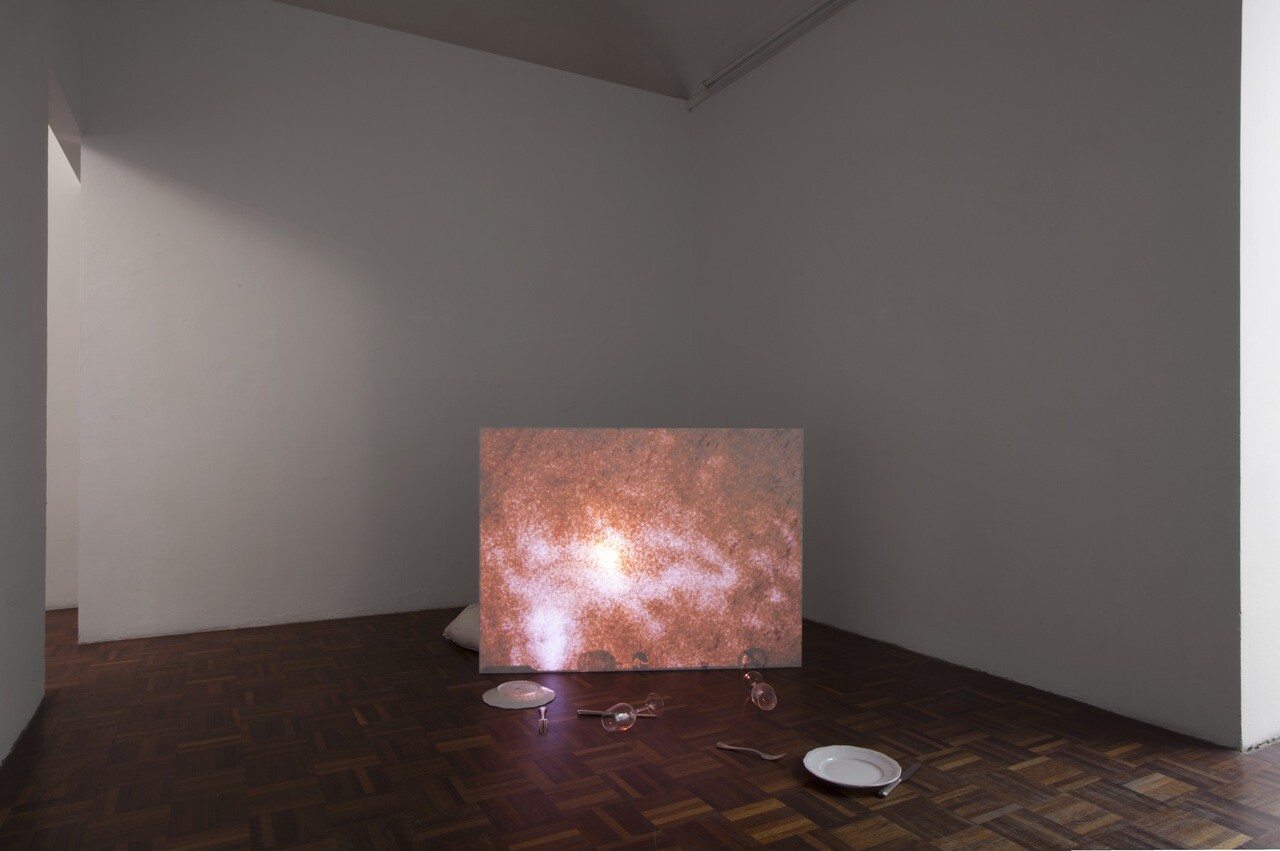The most striking works in Raphael Danke’s “Stoneflesh Aura” are arrangements of small objects nailed to three unprepared canvases. They catch your eye, then transform two times as you observe them. At first glance, they seem to be shards of pink-red quartz only partially revealed from within the rock that encases them, the kind found in souvenir shops everywhere. As you are drawn nearer by the crystals’ shiny surface, you realize that the rock is in fact a smudged mass of solidified concrete, and the red glow actually comes from bits of glossy paper pasted over it. There’s something funny in the sudden contrast, something of a childish prank—yet before your laugh dies out you realize that what you took to be quartz, then colored paper, is nothing but cut-out pictures of raw red meat, and this is revolting. This mix of sensory fascination, visual irony, and disgust is a signature component in Danke’s work. It most notably characterized his best-known early work, “Entfernungen” [removals], an ongoing series of collages in which Danke reassembled cut-up pictures from fashion magazines in which every trace of human bodies had been removed. The resulting images were both appealing in a fashion spread-like glossy, slick way, and eerie in their subtle hinting at the absent human form.
Danke’s exhibition at Norma Mangione Gallery in Turin takes this ambiguity one step further. The same room with the three canvases (Adopt. Spay. Neuter., Don’t make me a fashion victim, and Whose skin are you in, all works 2015) houses two small white sculptures on plinths. The stereotypically classical outline—fragments of human bodies represented in the manner of Greek statues—betrays their origin as serially produced garden statues, but all of the subject’s exposed body parts have been carved away. The empty concavities left within the folds of the drapery reveal the material’s surprisingly sensual granular texture. Instead of a horrific amputation, the result affords the polished beauty of Tony Cragg’s sculpture. Similarly, one of the room’s walls is lined with seven charcoal frottages of a marble floor (“Untitled”). The stone’s veins and layers are clearly recognizable in the subtle interplay of shades and streaks, but the drawings’ support—a thick sheet decorated with a blood-red-and-white checkered motif that Southern Europeans will immediately recognize as butcher’s wrapping paper—encourages a completely different reading of the work, the charcoal suggesting a black-and-white depiction of a steak. The same effect is achieved by a video, Mohrenstrasse (2015), projected onto the marble surface of a tilted table in a second, smaller room.
There could be something too literal, even narrow-minded, in the way every single work in Danke’s exhibition explores the analogy between flesh and stone (as explicitly stated in the title). One could see little point in obsessively trying to trace the threshold after which we identify a spongy, reddish material streaked with irregular white stripes as a piece of meat rather than a slab of marble. And yet this isn’t merely a visual threshold, a matter of lines and hue. Danke’s work plays around with that most essential of oppositions: organic/inorganic; subject/object; us/them. Even taken as a pun, which it often is, its being funny has less to do with laughing in joy than with grimacing in front of something grotesque.
That opposition has a subtly political dimension as well. In Danke’s cut-ups, the bodies that disappeared were mostly female ones; this gesture underlined their inessentiality to the shiny signifiers of fashion, quietly evoking the discomfort of their absence. In a similar way, “Stoneflesh Aura” is lined with allusions to animals: beings made of flesh which we routinely re-categorize as objects in order to suit our needs. The canvases with the tiny stones have PETA stickers on their back frames; a poster with an animal rights slogan titled Stop selling cruel foie gras hangs in front of the drawings made on butcher paper. By tricking us into mistaking meat for stone, only to make us feel a vague sense of revulsion at realizing our mistake, Danke might be suggesting this revulsion should be felt every time we buy sausages or ham in a store. It looks like an object, but it isn’t.

